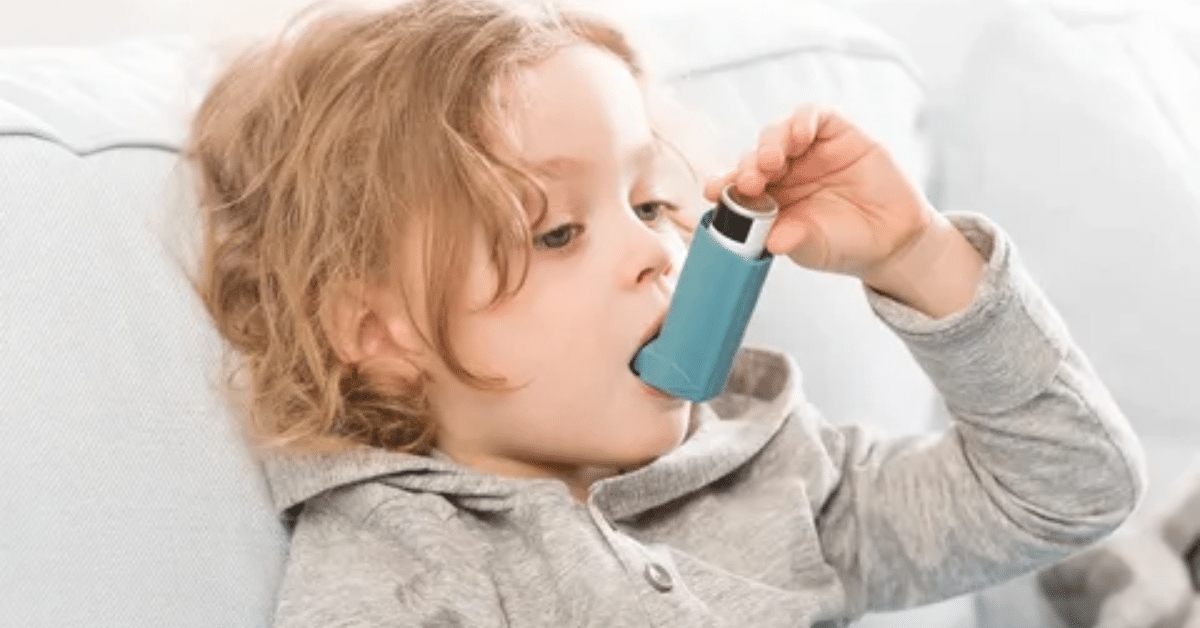Childhood asthma remains a prevalent concern in the realm of pediatric health, with numerous factors contributing to its development. Among these, prenatal tobacco smoke exposure stands out as a significant contributor, casting a long shadow over the respiratory health of unborn children. Understanding the intricate link between maternal smoking habits and the emergence of childhood asthma is crucial for devising effective preventive measures and interventions.
Also Read: Diagnostic and Medical Care 2024: Diagnostic Challenges in Rare Diseases
The Mechanism Behind Prenatal Tobacco Smoke Exposure and Childhood Asthma
At the heart of this issue lies the intricate interplay of various biological mechanisms. When a pregnant woman smokes, harmful chemicals such as nicotine, carbon monoxide, and tar infiltrate her bloodstream, passing through the placenta and reaching the developing fetus. These toxic substances disrupt the delicate process of fetal lung development, impairing the structural integrity of airways and predisposing the unborn child to respiratory complications.
Impact of Nicotine on Fetal Lung Development
Nicotine, the addictive component of tobacco smoke, exerts detrimental effects on the developing fetal lungs. It disrupts the formation of vital structures within the respiratory system, such as alveoli and bronchioles, leading to aberrations in lung function. Additionally, nicotine triggers inflammation and oxidative stress in the fetal lungs, laying the groundwork for the onset of asthma later in childhood.
The Role of Carbon Monoxide in Fetal Lung Injury
Carbon monoxide, another noxious byproduct of smoking, compounds the detrimental effects of prenatal tobacco smoke exposure on fetal lung development. By binding to hemoglobin more readily than oxygen, carbon monoxide diminishes the oxygen supply to the fetus, resulting in hypoxia-induced damage to developing organs, including the lungs. This compromised oxygenation perpetuates a cascade of events that culminate in the manifestation of childhood asthma.
Tar Deposition and Airway Obstruction
The tar present in cigarette smoke deposits a sticky residue along the airway linings of both the mother and the fetus. This tar contains an array of toxic compounds that aggravate inflammation and impair mucociliary clearance, rendering the respiratory tract more susceptible to infections and allergens. The resultant airway obstruction and heightened immune response set the stage for the development of asthma symptoms in childhood.
Preventive Strategies and Public Health Initiatives
Given the profound impact of prenatal tobacco smoke exposure on childhood asthma, concerted efforts are needed to mitigate this preventable risk factor. Healthcare providers play a pivotal role in educating expectant mothers about the hazards of smoking during pregnancy and offering smoking cessation support. Moreover, public health campaigns aimed at raising awareness about the adverse effects of tobacco smoke on fetal development can help curb smoking rates among pregnant women, thereby safeguarding the respiratory health of future generations.
Evaluating Long-term Consequences
The ramifications of prenatal tobacco smoke exposure extend far beyond infancy, exerting a lasting impact on the respiratory health of affected individuals. Research indicates that children born to mothers who smoked during pregnancy are not only at a higher risk of developing asthma but also face an increased likelihood of experiencing more severe asthma symptoms and exacerbations. Furthermore, these children may exhibit diminished lung function throughout childhood and into adolescence, predisposing them to respiratory ailments and reduced quality of life in the long term.
Environmental Tobacco Smoke and Asthma Risk
While the focus has primarily been on maternal smoking, exposure to environmental tobacco smoke (ETS) in the postnatal period also poses a significant threat to childhood respiratory health. Infants and young children who are exposed to secondhand smoke in the household are at an elevated risk of developing asthma and other respiratory conditions. This underscores the importance of creating smoke-free environments not only during pregnancy but also in the home and other public spaces frequented by children, thereby mitigating the adverse effects of ETS on vulnerable populations.
Genetic Susceptibility and Interactions with Smoking
It is essential to acknowledge that genetics play a crucial role in determining an individual’s susceptibility to asthma, and interactions between genetic factors and prenatal tobacco smoke exposure may further exacerbate this risk. Certain genetic variations can predispose children to heightened inflammatory responses and airway hyperreactivity in the presence of environmental triggers such as tobacco smoke. By unraveling the intricate interplay between genetic predisposition and environmental influences, researchers can gain valuable insights into personalized approaches for asthma prevention and management in high-risk populations.
Empowering Expectant Mothers and Healthcare Providers
Empowering expectant mothers with knowledge and resources to make informed decisions about smoking cessation is paramount in the battle against prenatal tobacco smoke exposure and childhood asthma. Healthcare providers play a pivotal role in delivering evidence-based smoking cessation interventions and providing support to pregnant women who wish to quit smoking. By fostering open communication and collaboration between healthcare professionals and expectant mothers, we can create a supportive environment conducive to positive health outcomes for both mother and child. Together, we can work towards a future where every child has the opportunity to breathe easy and thrive, free from the shackles of prenatal tobacco smoke exposure and its detrimental effects on respiratory health.
Conclusion
In conclusion, prenatal tobacco smoke exposure casts a long shadow over the respiratory health of unborn children, predisposing them to the development of childhood asthma. The detrimental effects of nicotine, carbon monoxide, and tar on fetal lung development underscore the urgency of implementing preventive measures and interventions to mitigate this preventable risk factor. By elucidating the intricate link between maternal smoking habits and childhood asthma, we can take proactive steps towards fostering a smoke-free environment for expectant mothers and their offspring. Let us join hands in safeguarding the respiratory well-being of our future generations.


